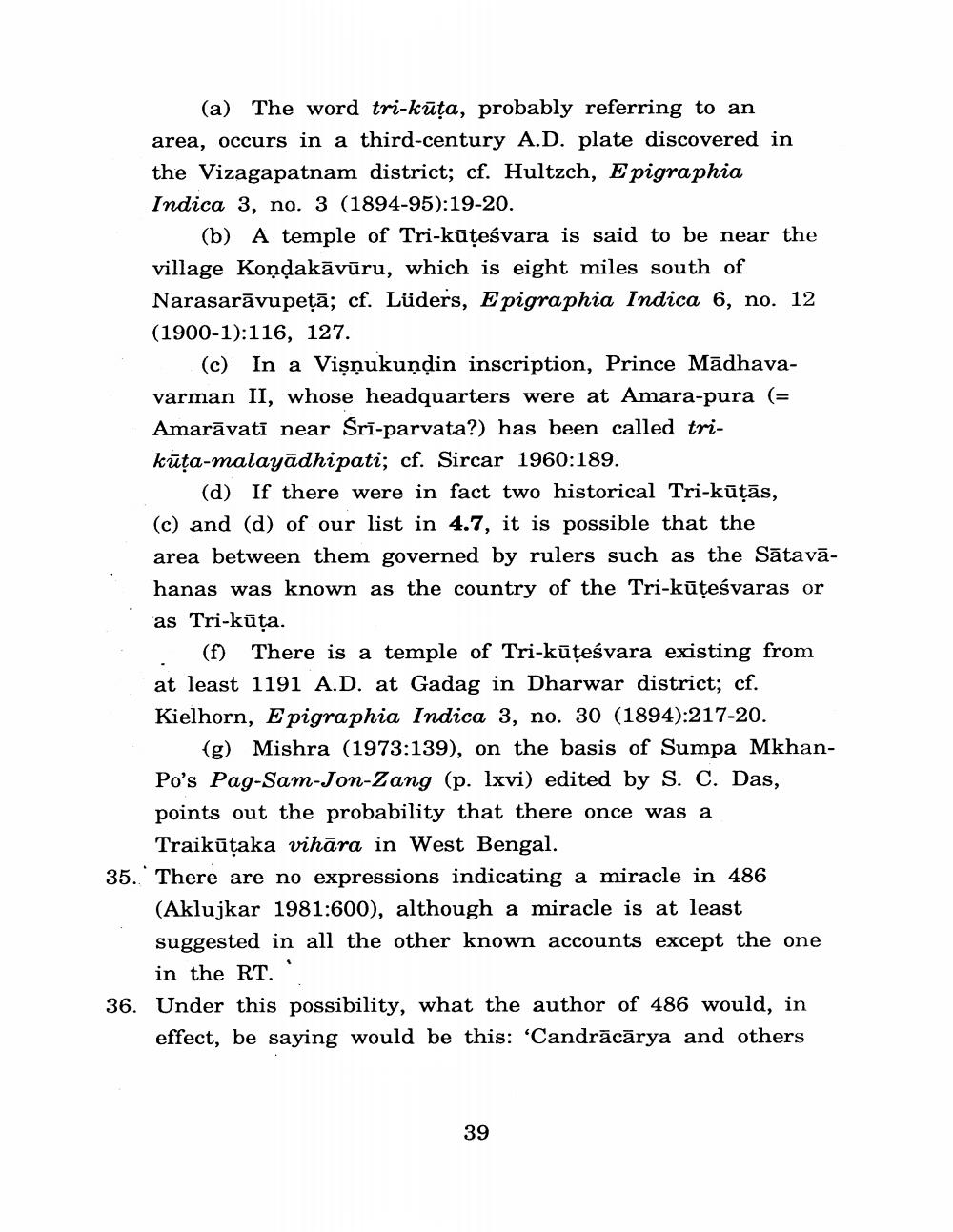________________
(a) The word tri-kūta, probably referring to an area, occurs in a third-century A.D. plate discovered in the Vizagapatnam district; cf. Hultzch, Epigraphia Indica 3, no. 3 (1894-95):19-20.
(b) A temple of Tri-kūțeśvara is said to be near the village Kondakāvūru, which is eight miles south of Narasarāvupeļā; cf. Lüders, Epigraphia Indica 6, no. 12 (1900-1):116, 127.
(c) In a Vişnukuņdin inscription, Prince Mādhavavarman II, whose headquarters were at Amara-pura (= Amarāvati near Sri-parvata?) has been called trikūta-malayādhi pati; cf. Sircar 1960:189.
(d) If there were in fact two historical Tri-kūtās, (c) and (d) of our list in 4.7, it is possible that the area between them governed by rulers such as the Sātavā. hanas was known as the country of the Tri-kūțeśvaras or as Tri-kūta.
(f) There is a temple of Tri-kūteśvara existing from at least 1191 A.D. at Gadag in Dharwar district; cf. Kielhorn, Epigraphia Indica 3, no. 30 (1894):217-20.
(g) Mishra (1973:139), on the basis of Sumpa MkhanPo's Pag-Sam-Jon-Zang (p. lxvi) edited by S. C. Das, points out the probability that there once was a
Traikūtaka vihāra in West Bengal. 35. There are no expressions indicating a miracle in 486
(Aklujkar 1981:600), although a miracle is at least suggested in all the other known accounts except the one
in the RT." 36. Under this possibility, what the author of 486 would, in
effect, be saying would be this: "Candrācārya and others
39




